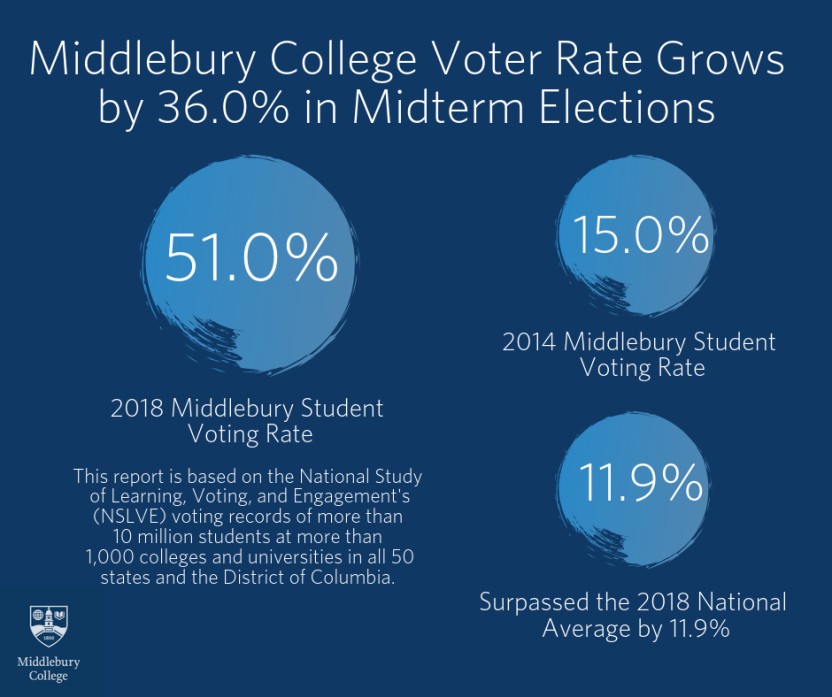Study Shows Major Increase in Student Voting at Middlebury

MIDDLEBURY, Vt. – A recently released national study on college student voting rates shows that Middlebury experienced a sharp rise in student voting rates from the 2014 midterm elections to the 2018 midterms. In 2014, the Middlebury student voting rate was 15 percent. In 2018, according to the report, the student rate jumped to 51 percent.
The report is part of the National Study of Learning, Voting, and Engagement (NSLVE), conducted by the Institute for Democracy & Higher Education (IDHE) at Tufts University’s Tisch College of Civic Life. The study shows that nationwide, the voting rates at participating college campuses doubled on average compared to the previous 2014 midterm.
In 2018, the average institutional voting rate among campuses in the study was 39.1 percent, nearly 20 percentage points higher than 2014’s average turnout rate of 19.7 percent. Turnout increases were widespread, with virtually all campuses seeing an increase over 2014. At 51 percent, Middlebury’s 2018 exceeded the national average by nearly 12 points.
The NSLVE is the only national study of college-student voting. It is based on the voting records of more than 10 million students at more than 1,000 colleges and universities in all 50 states and the District of Columbia; IDHE does not receive any information that could individually identify students or how they voted. The study provides reports to participating colleges and universities, which use them to support political learning and civic engagement, as well as to identify and address gaps in political and civic participation.“Our NSLVE data represents sustained campus efforts to engage students as voters,” said Ashley Laux, program director at Middlebury’s Center for Community Engagement. “I’m pleased that the Center for Community Engagement and MiddVote’s work to raise the profile of voting on campus positively impacted participation in the 2018 midterm elections. Student energy around participating actively in our democracy through electoral engagement remains high, and we look forward to continuing the momentum in the lead-up to the 2020 presidential election.”
Middlebury’s report includes extensive data on a wide variety of factors, including by voting method, age group, education level, class year, enrollment status, gender, race/ethnicity, and field of study.
For More Information
Middlebury Report from the National Study of Learning, Voting, and Engagement

